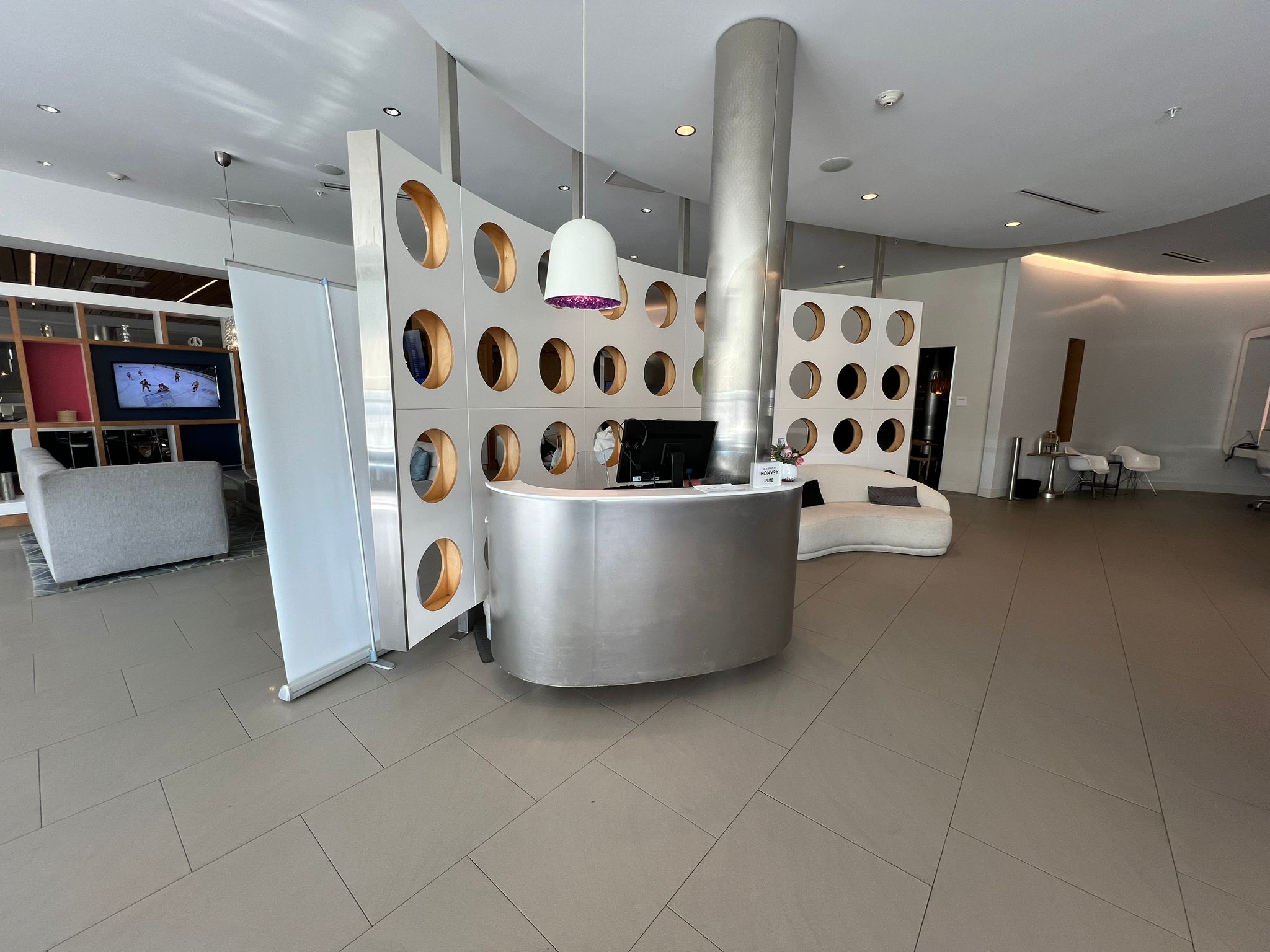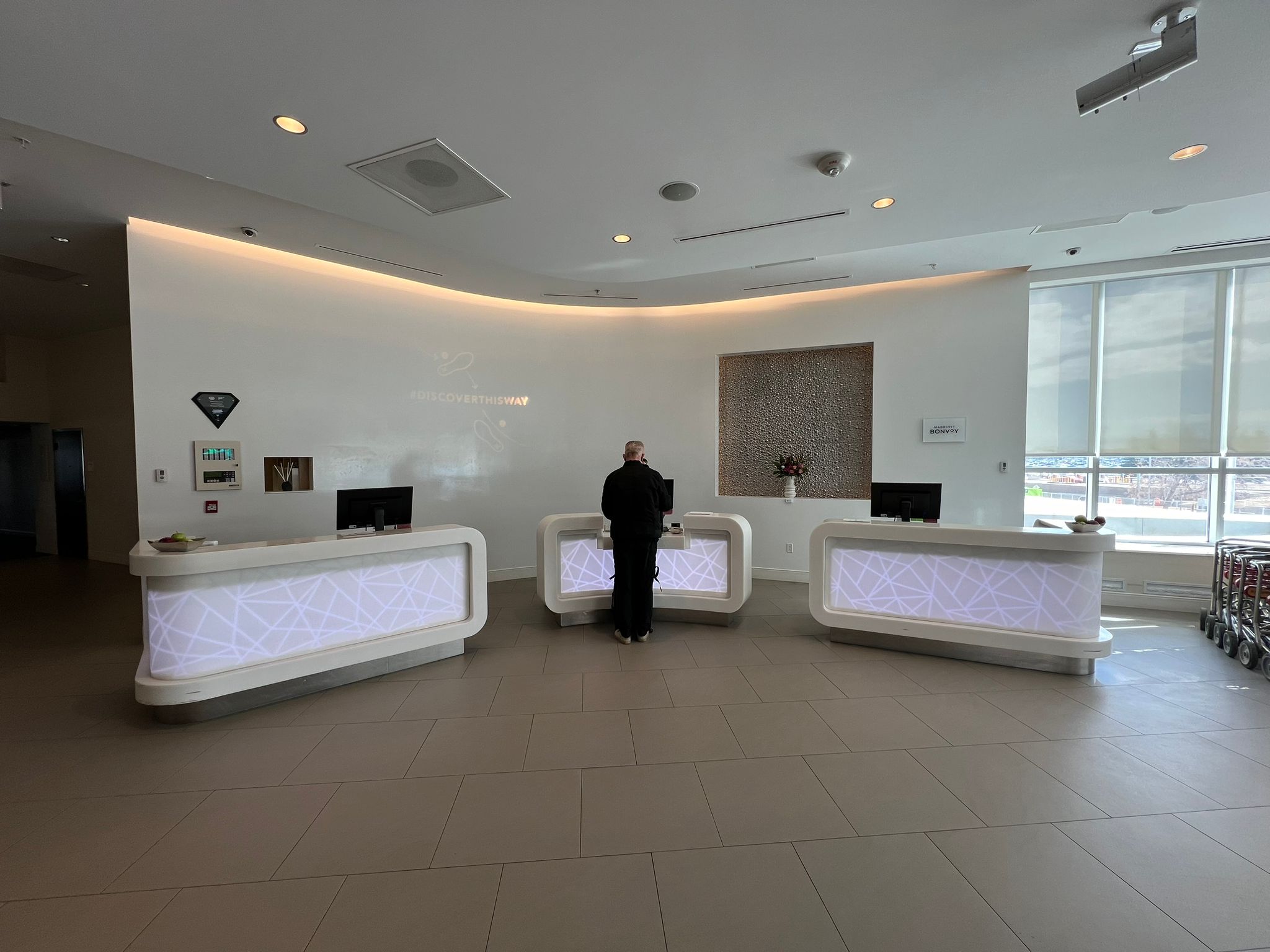Airport Hotel
Renovating a hotel involves comprehensive planning and meticulous execution to modernize facilities, enhance guest experiences, and improve operational efficiency. Here’s a detailed overview of the process:
Initial Phase: Conceptualization and Planning
- Needs Assessment: The project began with consultations with hotel management, designers, and stakeholders to understand the renovation goals. This included upgrading guest rooms, public areas, dining facilities, and back-of-house operations.
- Evaluation of Existing Conditions: A thorough evaluation of the existing hotel structure and facilities was conducted to identify areas needing improvement and to ensure compliance with current safety and accessibility standards.
Phase 1: Design and Architectural Planning
- Architectural Design: Detailed blueprints and 3D models were developed, focusing on modernizing the layout while preserving the hotel’s unique character. The design included guest rooms, suites, lobbies, restaurants, conference rooms, and recreational areas.
- Material Selection: High-quality, durable materials were selected for flooring, walls, and fixtures. Choices included sustainable materials that contribute to a luxurious yet eco-friendly environment.
- Lighting Design: A comprehensive lighting plan was created to enhance ambiance and functionality. This included a mix of natural lighting, ambient lighting, and accent lighting to create a warm and inviting atmosphere.
Phase 2: Structural Work and Upgrades
- Demolition and Reconstruction: Outdated structures and facilities were demolished as needed, making way for new, modern elements. Structural upgrades were carried out to ensure the building’s integrity and safety.
- Electrical and Plumbing Upgrades: Modernizing the hotel’s infrastructure included upgrading electrical systems for better energy efficiency and installing new plumbing to improve water efficiency and reliability.
Phase 3: Interior Renovation
- Guest Rooms and Suites: Rooms were redesigned to offer contemporary comfort and luxury. This included new furnishings, modern bathrooms, upgraded bedding, and enhanced in-room technology such as smart TVs and high-speed internet.
- Public Areas: The lobby, corridors, and other public areas were transformed to create a welcoming and stylish ambiance. Comfortable seating, attractive decor, and functional layouts were key focuses.
- Dining and Recreational Facilities: Restaurants, bars, and recreational areas like gyms and spas were upgraded. This included modern kitchen equipment, stylish dining furniture, and enhanced recreational amenities.
Phase 4: Technological Integration
- Smart Technology: Integration of smart technology throughout the hotel improved guest convenience and operational efficiency. This included automated check-in systems, keyless room entry, smart thermostats, and lighting controls.
- Security Systems: Modern security systems, including CCTV, electronic locks, and emergency response systems, were installed to ensure guest safety and security.
Phase 5: Exterior Enhancements
- Facade Renovation: The hotel’s exterior was refreshed with new paint, updated signage, and improved landscaping. This created an inviting first impression for guests.
- Outdoor Amenities: Outdoor spaces, such as gardens, pools, and patios, were upgraded to enhance the overall guest experience. Comfortable outdoor seating and recreational facilities were added.
Phase 6: Final Touches and Quality Assurance
- Decor and Furnishings: Final touches included adding artwork, decorative elements, and high-quality furnishings that align with the hotel’s theme and enhance its aesthetic appeal.
- Inspection and Testing: Comprehensive inspections and testing ensured that all systems and facilities were operating correctly. This included safety checks, technology testing, and a thorough review of all renovated areas.
Completion and Reopening
- Staff Training: Before the reopening, staff were trained on new systems, technology, and service standards to ensure a seamless guest experience.
- Soft Opening: A soft opening was held to test the new facilities and gather feedback, allowing for any final adjustments before the grand reopening.
- Grand Reopening Event: The renovation project culminated in a grand reopening event, attended by key stakeholders, media, and guests. The event showcased the hotel’s new features and improvements.
Enhanced Guest Experience
The renovated hotel offered a modern, luxurious, and comfortable environment for guests. The thoughtful design, advanced technology, and upgraded amenities ensured a memorable stay, setting a new standard in hospitality and positioning the hotel as a top choice for travelers.
The hotel renovation was a successful project, transforming the property into a contemporary and welcoming space that meets the needs of modern guests while preserving the unique charm of the original structure.


